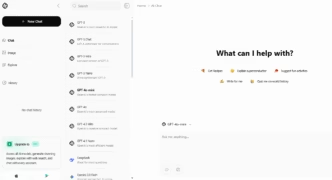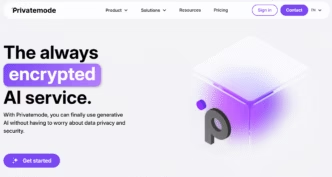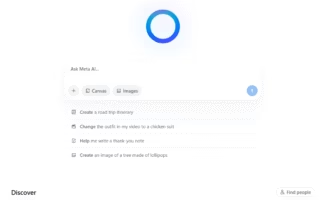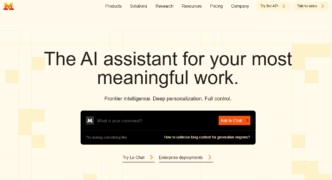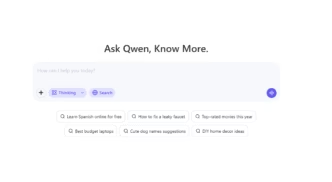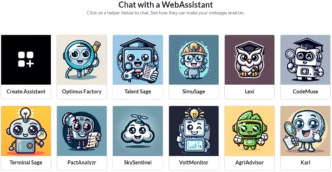Explore the power of Chatbot AI—intelligent virtual assistants for customer support, automation, and engagement. Boost efficiency with AI chatbots today!
Chatbot AI: A human-first guide for 2025 🤖💬
Chatbots aren’t just widgets anymore—they’re always-on teammates that hold conversations, take action, and scale care across channels. A chatbot (or AI chatbot) is software that simulates human conversation via text or voice; modern versions rely on NLP, machine learning, and generative AI to understand intent, personalize responses, and complete tasks, with customer service remaining a flagship use case. In 2025, leading platforms extend beyond Q&A to multimodal input, persistent context, and autonomous workflows that integrate with business systems.
Overview 🌍
AI chatbots have evolved from rule-based scripts into conversational systems built on large language models that can interpret messy input, learn from interactions, and act—scheduling, searching, routing, or triggering workflows across tools. They’re deployed on websites, apps, messaging channels, and voice surfaces, reshaping sales, support, operations, and internal help at scale.
Define the tools 🧰
- Chat interface: Natural, multi-turn conversation via web, mobile, or messaging apps.
- Multimodal inputs: Accept text, voice, images, and files to ground answers or extract data.
- Knowledge grounding: Connect to docs, FAQs, product catalogs, data warehouses, or CMS.
- Flow builder: Visual/no‑code conversation design plus intents, entities, and guardrails.
- Orchestration: APIs, webhooks, and RPA to take actions (create tickets, book slots, update CRM).
- Live handoff: Seamless transfer to human agents with conversation context intact.
- Analytics: Dashboards for containment rate, CSAT, topics, and drift detection.
- Security: RBAC, audit logs, data residency, and PII redaction for compliance. These are common components across modern chatbot platforms and feature rundowns.
Pros and cons ⚖️
- ✅ Pros
- 24/7 availability: Always on, instant replies, lower wait times.
- Scale and cost efficiency: Handle spikes without hiring; deflect routine tickets.
- Personalization: Use history and context to tailor answers and paths.
- Data collection: Capture preferences, intents, and feedback for continuous improvement. Documented benefits include availability, engagement, data capture, and cost optimization when paired with solid design and handoff.
- ⚠️ Cons
- Limits with emotion/nuance: Can miss tone or complex edge cases—human fallback matters.
- Data security: Collection, storage, and integration must be governed and compliant.
- Implementation time: Training, testing, and iteration are required for quality. Leading guides stress human escalation, careful privacy controls, and patient iteration to mitigate risks8.
Key features 🌟
- Intent understanding & NLU: Map messy queries to accurate intents and entities.
- Gen‑AI responses: Dynamic, fluent answers grounded in your knowledge base.
- Sentiment detection: Adapt tone; escalate when frustration or risk appears.
- Omnichannel delivery: Website, app, WhatsApp, SMS, social, email, voice.
- Live agent handoff: Intelligent routing with transcript and context.
- No‑code builder: Drag‑and‑drop flows for designers and non‑developers.
- Analytics & A/B tests: Track containment, CSAT, topics; iterate fast.
- APIs & SDKs: Deep integrations with CRM, helpdesk, commerce, and back office. These capabilities repeatedly show up in expert feature lists and buyer guides.
Use cases & applications 🚀
- Customer support: FAQ automation, order tracking, returns, troubleshooting, and proactive outreach.
- Sales & marketing: Lead qualification, product discovery, promotions, and guided checkout.
- E‑commerce: Size/fit help, restock alerts, cart recovery, and post‑purchase care.
- Healthcare: Triage, appointment scheduling, reminders, and care-navigation (with guardrails).
- Financial services: Account queries, KYC checks, billing reminders, and education.
- Travel & hospitality: Booking, itinerary changes, concierge tips, and disruption handling.
- HR & IT (internal): Policy Q&A, onboarding, access requests, password resets, app support.
- Productivity: Scheduling, notes, summaries, and workflow triggers across SaaS tools. Industry roundups highlight these patterns, with reactive and proactive chatbots delivering measurable gains across sectors.
Who is it for? 🎯
- Founders & SMBs: Always-on pre‑sales, support deflection, and lean ops.
- Mid‑market & enterprise: Omnichannel care, integrated workflows, and governance.
- E‑commerce teams: Conversion lifts via guided shopping and proactive recovery.
- Support leaders: Lower handle times, higher FCR, and agent co‑pilot assist.
- Ops/IT/HR: Internal self‑service to reduce tickets and speed provisioning. Adoption is broad and rising, with organizations investing in chatbots for customer engagement and support at scale.
Pricing plans 💰
- Free & trials: Basic features or limited monthly interactions to evaluate fit (common across vendors).
- Fixed plans (seat/MAU): Predictable pricing with tiers for capacity/features; often includes live chat, bot builders, and analytics.
- Usage‑based: Pay per conversation/message/token—scales up or down with traffic.
- LLM assistant subscriptions: Consumer/pro tiers (e.g., assistants with voice, file analysis, and higher limits).
- Enterprise: SSO/MFA, RBAC, data residency, SLAs, connectors, and volume discounts. Pricing models vary by vendor; comparisons show fixed vs usage-based patterns, while assistant subscriptions and consumer apps illustrate feature‑tiered offers.
Find more & support 🧭
- Learn the basics: Definitions, types, and foundations of chatbots and conversational AI.
- Evaluate features: Prioritize NLU quality, handoff, omnichannel, analytics, and security.
- Pilot and iterate: Launch on one high‑impact journey, then expand with data-driven changes. For primers and best‑practice overviews, see foundational explainers and industry guides.
Quick starter checklist ✅
- Define one job: e.g., “Automate order status + returns + shipping FAQs.”
- Ground the bot: Connect your help center, policies, and product data.
- Design escalation: Clear thresholds for live agent handoff with full context.
- Measure what matters: Containment, CSAT, AHT, and conversion—not just volume.
- Tight feedback loop: Review transcripts weekly; tune intents, prompts, and guardrails.
If you share your niche, channels, and volume, I’ll sketch a lean, high‑ROI chatbot plan—flows, grounding sources, handoff rules, and the best pricing model for your traffic.
